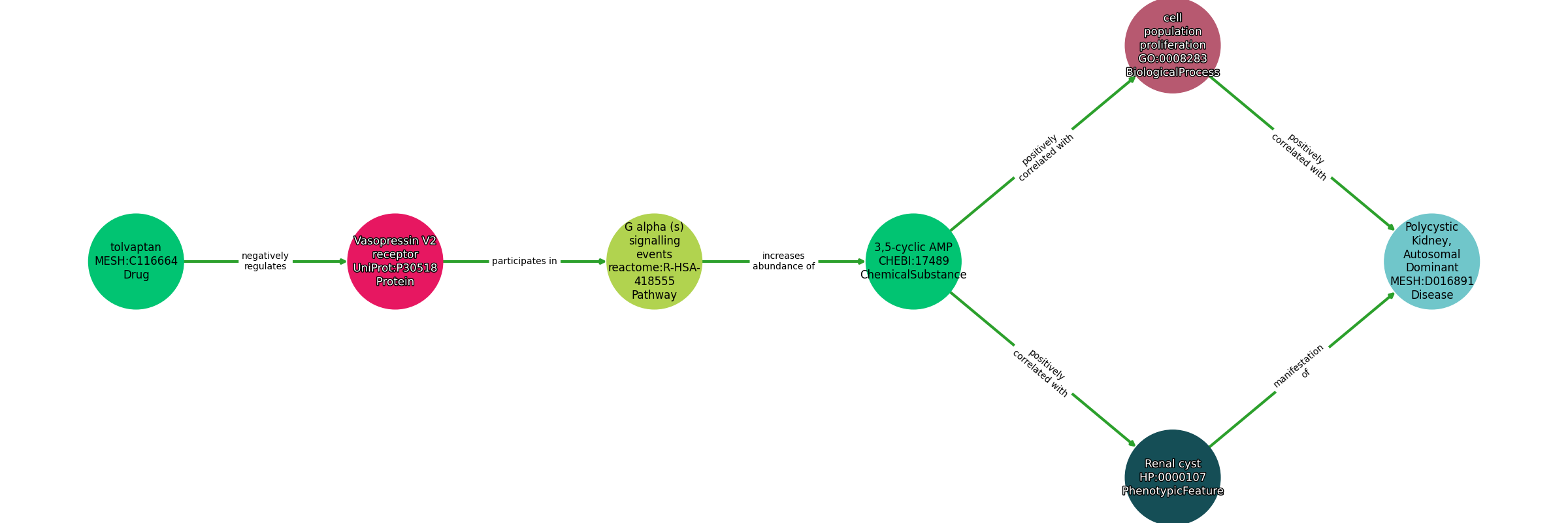Path ID: DB06212_MESH_D016891_1

Concepts
| Identifier | Name | Type |
|---|---|---|
| MESH:C116664 | tolvaptan | Drug |
| UniProt:P30518 | Vasopressin V2 receptor | Protein |
| reactome:R-HSA-418555 | G alpha (s) signalling events | Pathway |
| CHEBI:17489 | 3,5-cyclic AMP | ChemicalSubstance |
| HP:0000107 | Renal cyst | PhenotypicFeature |
| GO:0008283 | cell population proliferation | BiologicalProcess |
| MESH:D016891 | Polycystic Kidney, Autosomal Dominant | Disease |
Relationships
NOTE: predicates are annotated in Biolink Model (v1.3.0)
| Subject | Predicate | Object |
|---|---|---|
| Tolvaptan | NEGATIVELY REGULATES | Vasopressin V2 Receptor |
| Vasopressin V2 Receptor | PARTICIPATES IN | G Alpha (S) Signalling Events |
| G Alpha (S) Signalling Events | INCREASES ABUNDANCE OF | 3,5-Cyclic Amp |
| 3,5-Cyclic Amp | POSITIVELY CORRELATED WITH | Cell Population Proliferation |
| 3,5-Cyclic Amp | POSITIVELY CORRELATED WITH | Renal Cyst |
| Renal Cyst | MANIFESTATION OF | Polycystic Kidney, Autosomal Dominant |
| Cell Population Proliferation | POSITIVELY CORRELATED WITH | Polycystic Kidney, Autosomal Dominant |
Comment: This disease is also known as Polycystic kidney disease adult type as per the original file. Tolvaptan is also known as aquaretic (https://en.wikipedia.org/wiki/Aquaretic). Note that hyponatremia corresponds to the state where water content is relatively large for the sodium content available (https://pubmed.ncbi.nlm.nih.gov/19322975/), which is possibly due to increased water reabsorption.
Reference: